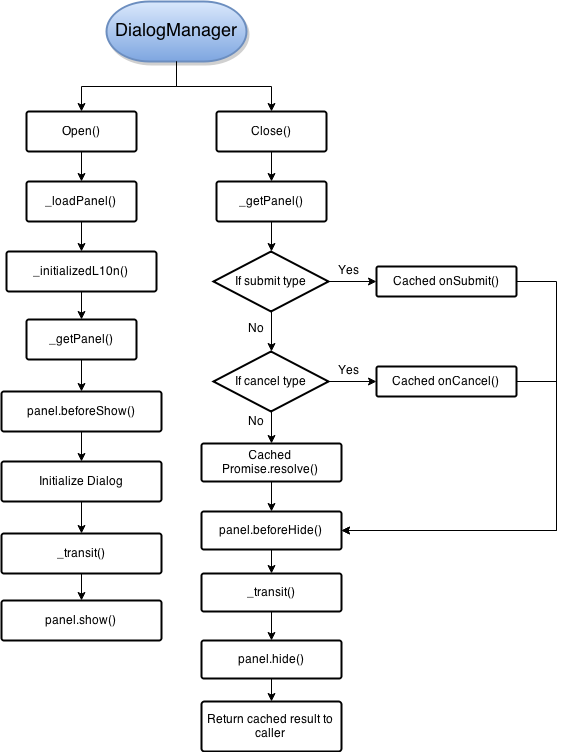
DialogService
Flowchart
DialogService focuses on controlling states between dialogs, it will make sure every time there is only one dialog showing up on the screen and for the others, they will be queued as an internal state and will be executed one by one when current dialog is dismissed.
Right now we support 4 different types of dialogs, AlertDialog, ConfirmDialog, PromptDialog and PanelDialog in DialogService.
For the previous three dialogs, they are used as a substitution of native alert, confirm and prompt API with predefined layout based on UX’s spec. While for PanelDialog, you can define your own dialog with pre-defined interface and DialogService will help you show it with all necessary callbacks are bounded on UI.
While for lifecycle of dialogs, they are all handled in DialogManager and please go check related documentation for this part.
DialogManager
DialogManager is a manager that mainly focuses on controlling the whole life cycle of each dialog. It will load panel, initialize panel, use pre-defined transition to show panel when DialogManager.open() is called. While for DialogManager.close(), it will find out which panel is going to be closed, validate the result of onSubmit() or onCancel(), and use pre-defined transition to hide panel.
Basically, this DialogManager will be only used accompanied with DialogService. If you want to know more details about how they are communicated with each other, you can go check settings/js/modules/dialog_service.js for more details.
探索更多來自 阿龍/我的奮鬥日記 的內容
訂閱即可透過電子郵件收到最新文章。

